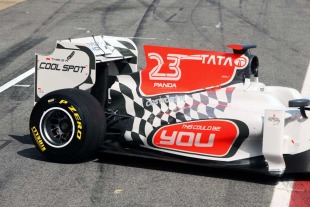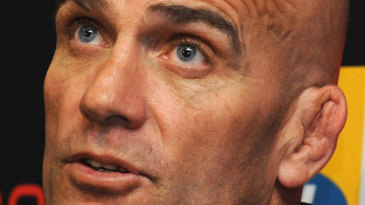
News that HRT has been put up for sale is hardly surprising, less so than when a Spanish investment company bailed the struggling (in every sense) team out last year. In the current economic climate it is hard to see anyone rushing in to do the same, unless they have money to burn as well as an ego to massage.
There have been rumours HRT was on the verge of being sold for a few months but they have turned out to be just that - rumours. The Indian media has raised the prospect of this being an opportunity for a second Indian team and interest has also been flagged from the Middle East. Only last week HRT staged a PR hit in China, suggesting a late bid for investment from that source. While buying HRT would be a quick way onto the grid, it would also mean inheriting a large debt and a team with little in terms of infrastructure or potential.
Then there is location. The decision of the owners to relocate the operation to Spain was brave but makes the sale even less appealing. The technological base for F1 remains in the UK and a bottom-end team will find it easier to recruit and innovate in an environment where the industry and expertise thrives. Any new buyer - unless Spanish and given the economic situation there that seems highly unlikely - will face a costly move.
That the teams who joined F1 in 2010 have all survived given the global economic climate allied to them being perennial backmarkers for three seasons is remarkable in itself. Formula One is a hugely expensive sport and even a cut-price operation like HRT has annual running costs somewhere in the region of $30-40 million - that's about a tenth of a leading outfit such as Red Bull.
But it is has managed to do so with the odds stacked so heavily against it, bucking the history of smaller teams coming and going with depressing frequency. In the 1990s it was at times hard to work out who was likely to turn up at the next race and how many cars they would field.
HRT has ploughed on with small budget and unapologetic use of pay drivers. But inevitably that has meant it has never been anything more than a tail-end Charlie and being honest has never looked like shaking off that mantle. Fundraising has been hard. Sponsors are hardly likely to flock to have their names on cars which only get all-important TV exposure when being lapped or involved in collisions.
Unless a buyer appears in the next three weeks it seems 2013 will start with 22 cars on the grid. That will be a shame, but the reality is few outside the diehard fans will notice.
Martin Williamson is managing editor of digital media ESPN EMEA
© ESPN Sports Media Ltd.
 Martin Williamson is managing editor of digital media ESPN EMEA Martin Williamson, who grew up in the era of James Hunt, Niki Lauda and sideburns, became managing editor of ESPN EMEA Digital Group in 2007 after spells with Sky Sports, Sportal and Cricinfo
Martin Williamson is managing editor of digital media ESPN EMEA Martin Williamson, who grew up in the era of James Hunt, Niki Lauda and sideburns, became managing editor of ESPN EMEA Digital Group in 2007 after spells with Sky Sports, Sportal and Cricinfo

